Login or Subscribe
You must be logged in to access this content
Subscribe for free access to Japanese Exotic Mushroom Journal and gain insider knowledge on effective cultivation methods for Japanese mushroom species. Elevate your skills with expert tips and innovative technologies to master the art of growing Japanese exotic mushrooms.
◆ Discover exclusive Japanese mushroom cultivation techniques
◆ Learn innovative methods to enhance mushroom quality and yield
◆ Tap into Japan's rich heritage for unique growing insights
◆ Discover exclusive Japanese mushroom cultivation techniques
◆ Learn innovative methods to enhance mushroom quality and yield
◆ Tap into Japan's rich heritage for unique growing insights
Subscribe Now for Free Login
How the question of where you grow mushrooms impacts the rest of your business
An editorial by: Johannes Auer- In my last editorial I tried to work out the major questions one should answer before starting a business in the exotic mushroom sector. We continue at this point with a very practical question: which variety(ies) of mushrooms should I grow and for what needs? Creating a sustainable business is something very different from creating a start-up; we cannot just think “if you build it, they will come” and assume that just by having a product demand will follow.I’m always surprised that many businesses approaching mushroom farming look to “start-ups” when it comes to establishing a new and modern company in the mushroom sector, often with little reference to actual agricultural practice. Now, this might be because in a cosmopolitan, urban environment a business producing mushrooms can attract attention and funding by operating like an interesting, “hip” start-up. The character of a start-up is to found a company with a new product and promises of rapid growth, often combined with less money put down from the founder side, who, on the other hand pitch their knowledge and abilities with the aim of selling the company to a larger and more established player at a certain point and then jumping out of the business altogether like a gambler walking away from the poker table with their chips. But the fact is that the mushroom business is not compatible with that mindset. Growing mushrooms is, at the end of the day, agriculture. We are talking here about producing and selling a spoilable food product. There are endless applications for fungi, but we are still talking about agricultural work. If you want success with this kind of business a fancy idea is not enough; you need to be willing to get your hands dirty.As I said in the previous editorial, knowledge of your intended market is crucial. In this issue, I turn to production facilities and how to structure the production process. Essentially, within Europe there are two main types of substrate for growing exotic mushrooms. There is straw-based substrate and there is mixed-substrate which is mainly based on sawdust with varied supplementation for nitrogen and mineral content. What anyone who wants to join the sector should think of first when it comes to the production process, is where they want to produce mushrooms. This question seems very basic and logical, but in fact it is a question many underestimate. Finding real estate based on the particular needs and the sizable space requirements of mushroom farming is in fact as important as having a market. This real estate and its concrete form give you opportunities or_emdash_on the other hand_emdash_limitations to where you can start and where you can go with the business.In case of my home country Austria_emdash_as in many European countries_emdash_the land available for construction of new farms is getting more and more limited. If you want to buy a parcel of land you have to have a business plan in mind, the first part of which is where you will set-up shop. This is the first major strategic decision for a new farm and a difficult one. The new business has to keep in mind that running a mushroom farm means that, for efficiency, they need to centralize operational processes at one location as much as possible. What does this physical location need to support in the future. A packaging warehouse? Fruiting rooms? Only space for shipping containers? A steel-reinforced concrete building or only vinyl houses?
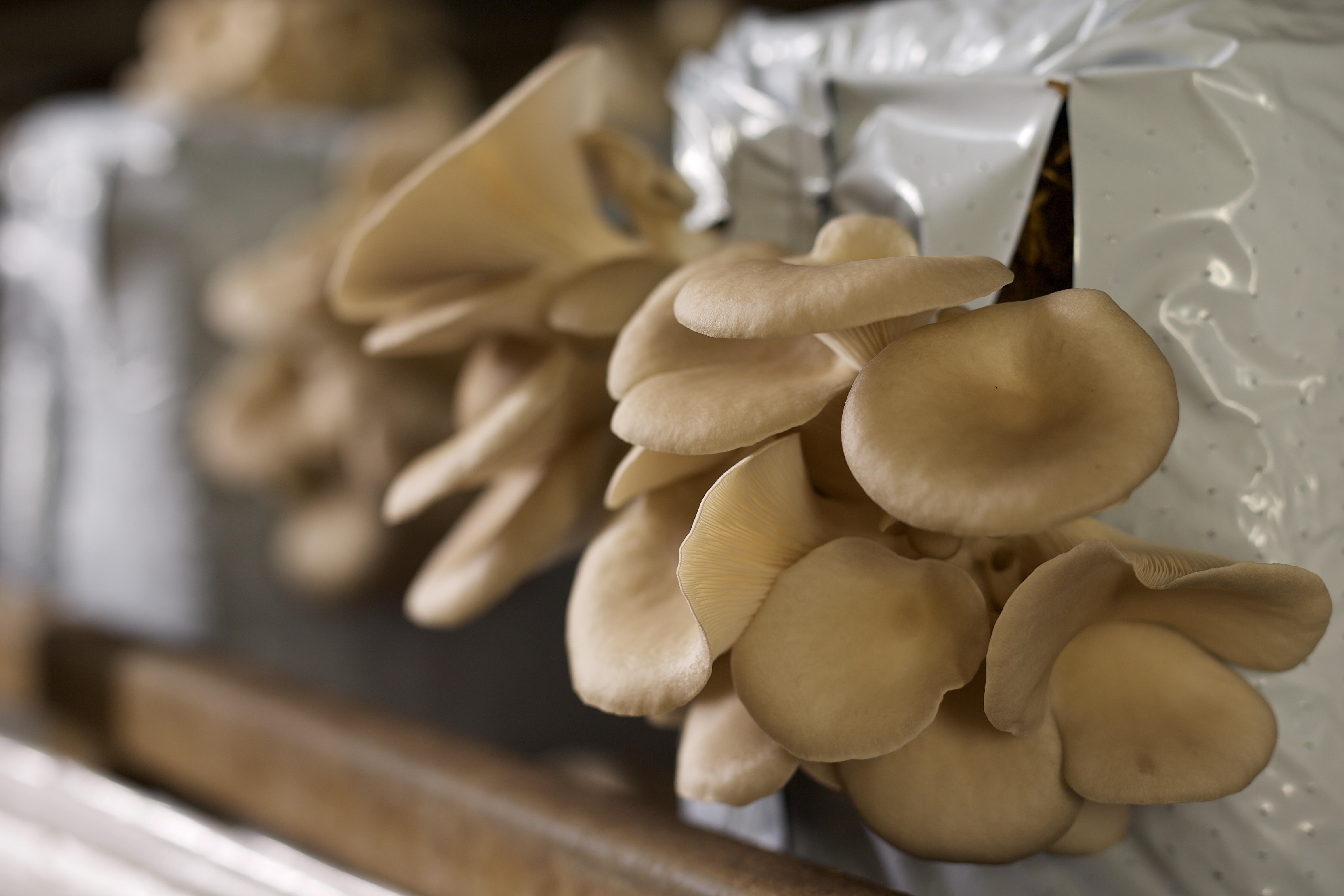
- Oyster mushrooms growing on straw-based substrate in filter-less plastic bags. This is quite common in Europe, though this journal has heard from American growers that quality and yields are better on sawdust-based substrates in a filter bag, and that the process is simpler too, as there is no composting.
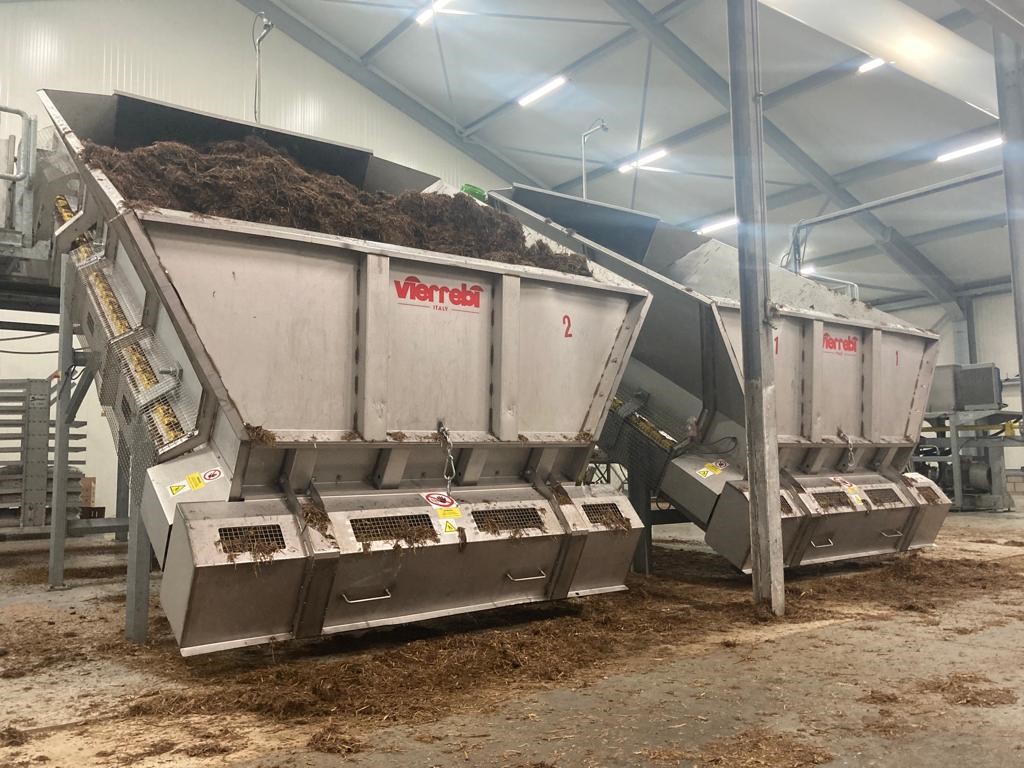
- An example of the scale needed to produce straw-based substrate at scale.
- These questions all come back to how much quantity you want to produce and which variety of mushrooms (which is why I brought up that planning issue prior to discussing production facilities in my editorial order). I have seen many times that new farms underestimate the importance of initial decisions they make about their facility’s set-up, location, and scope, which locks them into subpar situations. Some have a facility with huge limitations like an old cellar, bunker system, or a garage and they think that if they can just get started, they can fix issues as they go along. They buy sometimes old climate-control units or even have no climate-control units and they start with their own substrate or they buy blocks. The main mistake in these cases is often that this type of grower is only focused on growing and not on planning. So, most of these growers will get into trouble with their customers because they cannot reliably supply the quality and quantity of mushrooms promised under contract. This is the first problem. The second challenge for a future farmer in this field is that of future expansions. If the goal is to go to the local market to sell fresh mushrooms, a farm needs to ask which variety it wants to produce and in what quantity now and in the future and this is connected to the facilities and land available.Implicit in the question of real estate is whether you want to produce on phase 2 or phase 3 (non-incubated or incubated substrate) or if you want to produce your own substrate. This is not a question you should underestimate and answer later after you get used to the growing process. You need more time and more space for incubation to produce phase 2 substrate than using, for example 3kg phase 3 sawdust blocks that are already incubated. This question is also very crucial for your planning. Phase 2 blocks can be a good decision but you have to keep in mind that you have to have growing skills to incubate them well and that means that you have to invest in technique (incubation is harder than fruiting as a general rule) as well as in specialized facilities. With this there comes the next major question of who will do the labor at your future location. Will you be doing everything by yourself? (This is impossible for any scale larger than a farm that only sells at weekend markets.)To summarize the first three steps: First, you have to know your market. Second, you have to know which variety of mushroom you want to produce and in which quantity. Third, think about the physical location(s) at which you will do all of this. It is not until the fourth step that we actually consider the production and growing facilities themselves. When I look deeper at this point, it should become clear that the main constraint of production systems is, in fact, the physical location a farm has chosen.In mushroom farming in general growers are very dependent on substrate. The substrate is the sphere where the mycelium lives. A grower cannot overlook this fact. In Agaricus farming most farms in Europe work on phase 3. For them, of course the quality of the substrate is still important, but a grower can influence the result, which is why careful farm management is so important on Agaricus farms. For example, if a farm gets poorly incubated compost, they can use growing techniques to compensate for this and improve the results, even if they may not completely make up for the poor substrate.
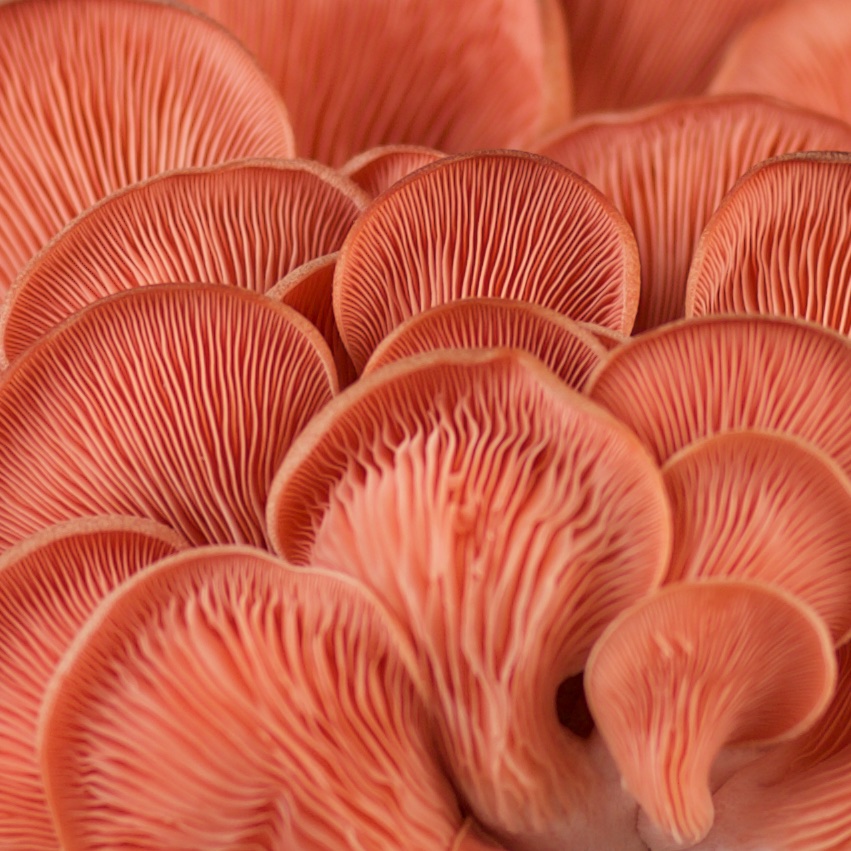
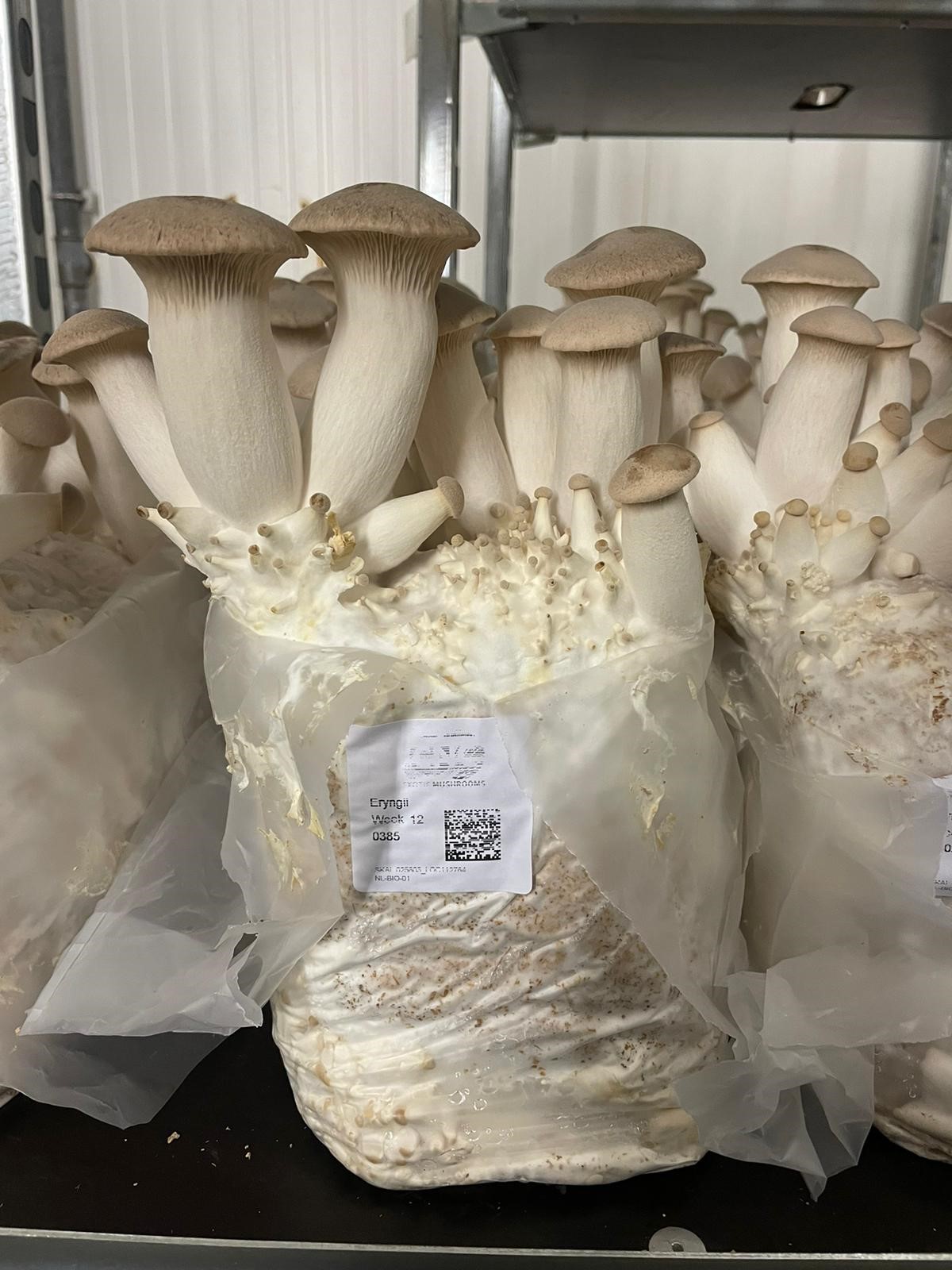 A close up of pink oyster mushrooms (Pleurotus djamor).Eryngii growing from sawdust-base substrate in a filter bag.
A close up of pink oyster mushrooms (Pleurotus djamor).Eryngii growing from sawdust-base substrate in a filter bag.- When it comes to exotic mushrooms, however, the game is a bit different. The substrate, its quality and production, are a delicate balancing act. When you use so-called phase 3 substrate at an exotic mushroom farm what you are really getting is fully incubated blocks. The work is more or less done. You cannot influence the output as much as in Agaricus farming, and many times you cannot influence the output at all. That means farms require more high-trust relationships with their substrate suppliers. When deciding what form you want your business to have, you should keep in mind these trade-offs with phase 2 and phase 3 substrate, in particular whether there is even a supplier capable of meeting your substrate needs.I want to say clearly that there can be legitimate reasons to produce in phase 3 and there is nothing inherently wrong with that setup, but the business has to know that it will get a substrate where almost all processes that impact yield and quality are already decided by the substrate supplier. You can influence the output a little by treating the substrate well, but most work is done when this substrate arrives on your farm and practically speaking, the farm has no recourse but to put the blocks on shelves and hope that the supplier did their jobs right.Ultimately the quantity that you feel confident selling should determine most decisions related to how you want to run your farm. There are four options:
- Use phase 2 blocks.
- Use phase 3 blocks.
- Produce your own substrate from the point of filling and mixing substrate.
- Make a strategic decision to keep all three options open or to use a mixture of the three.
But before that, growers have to make a crucial decision about where to begin production, for which the questions (and sometimes legal regulations) are too varied to cover in a short editorial. I recommend working with experts to go over your particular case in detail, beginning with your region, envisioned scale, how you want to set up your farm, and what your target market is to determine what location and what kind of facilities work best in your unique situation.In the next part of this series, I want to explain the different forms of production in a little more detail and compare their different needs, especially as those needs relate to facilities and space requirements. The reader should keep in mind that this is not a judgement against one form or another, because all three forms of growing have a logical place in the mushroom business. But a farm needs to have reliable information guiding their decisions of where and how to start and so part 4 of this series aims to give clearer guidance for the substrate sourcing and growing systems. I hope that readers begin to see that this is not a linear guide as in “Do this, then do this.” These steps are all interrelated, and all of these things need to be considered simultaneously from the beginning to avoid wasted time and investment money on pitfalls that could have been avoided with better preparation and planning.Johannes Auer was born in Tyrol, Austria, and is project manager and grower at FZ Development Gmbh, Frutura Austria and has worked as a consultant for several other companies. Johannes has worked since in the mushroom business full-time since 2019 and has a background in horticulture with an interest in microorganisms in soil. He has worked in and studied the mushroom sector in Austria, Belgium, Hungary, Italy, Israel and the Netherlands.He is currently working on developing the exotic mushroom sector and is involved in several research and development projects for exotic mushroom farming.
You can contact him at johannes@jauer.at 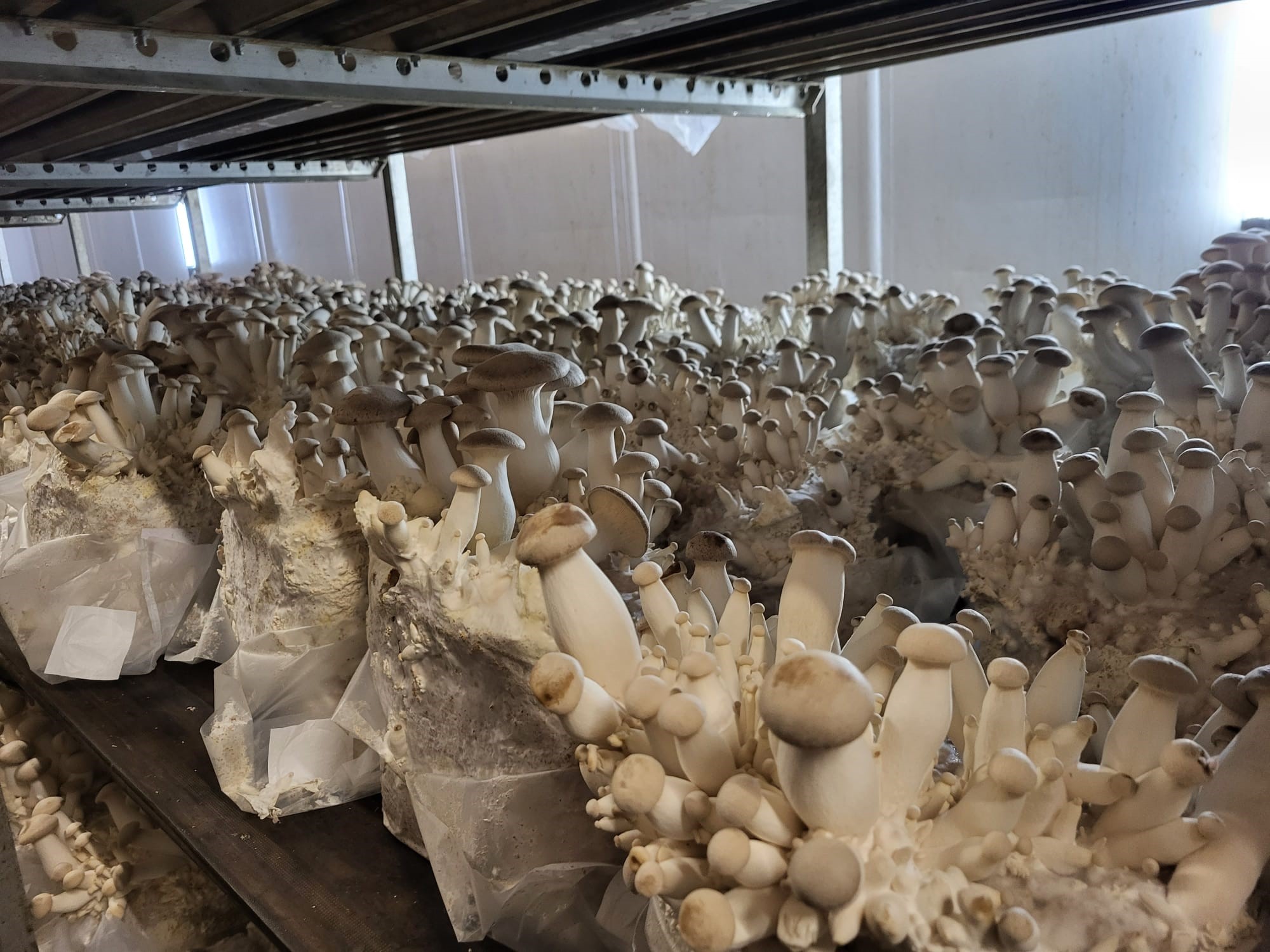

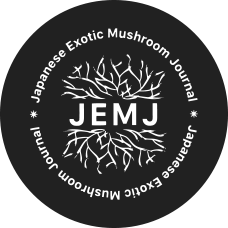



 1-2-13 Honmachi, Komoro city, Nagano prefecture, Japan 384-0026
1-2-13 Honmachi, Komoro city, Nagano prefecture, Japan 384-0026